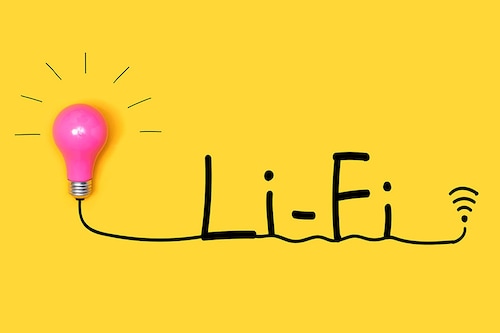Spotlight on Li-Fi, the technology delivering internet connectivity through ligh
Li-Fi, a technology that provides internet connectivity through light, has been promising to provide a powerful and secure connection where Wi-Fi is not available


The International Day of Light, celebrated on Tuesday, May 16, is an opportunity to look at what"s in store from a particularly promising technology called Li-Fi. Li-Fi, a technology that provides internet connectivity through light, has been promising to provide a powerful and secure connection where Wi-Fi is not available. However, due to a lack of compatible equipment, the concept is still struggling to expand..
Li-Fi is a wireless communications system that uses light, operating at a wavelength between 480 and 650 nm.
On paper, this has many advantages, starting with the fact that it is useful both for providing light and for connecting to the internet. However, light, unlike radio waves, cannot pass through walls and therefore secures the connection, which cannot be intercepted and hacked from the outside. Finally, light does not interfere with radio frequencies (Wi-Fi, 5G, etc.) present in the same space. On the other hand, Li-Fi requires the user to be close to the emitting lamp and to ensure their hardware is perfectly exposed to the emitted light in order to work properly. In fact, its range is very low. Still, this does not prevent it from displaying increasingly impressive performance, currently with a theoretical throughput approaching 2 Gbps (Gigabits per second), and this is constantly increasing. The goal is even to reach 100 Gbps by 2025!
In terms of use, Li-Fi is a credible alternative in all environments where Wi-Fi is currently prohibited. This applies to certain military zones, as well as daycare centers or certain hospital departments. Many trials and experiments have already taken place, in airports in Dubai (United Arab Emirates) or Tallinn (Estonia), for example, or at the Louvre Museum in Paris.
For Li-Fi to be more widely used, not only must the dedicated environment be widely equipped with LEDs, but mobile terminals must also have sensors compatible with this new technology. And this is precisely where the problem lies, because very few devices are currently compatible with this technology. To address this, French company Oledcomm is participating in the development of a chip that could one day be integrated into mobile terminals. But, for the moment, this type of technology is reserved for a few professionals in the electronics, defense, health, automotive and aerospace industries.
The aim is that, in the future, the general public can have access to Li-Fi with compatible devices. Even though this is likely to take time, the first compatible products are now coming to the market, from the likes of Samsung, Panasonic and Philips.
First Published: May 15, 2023, 12:38
Subscribe Now